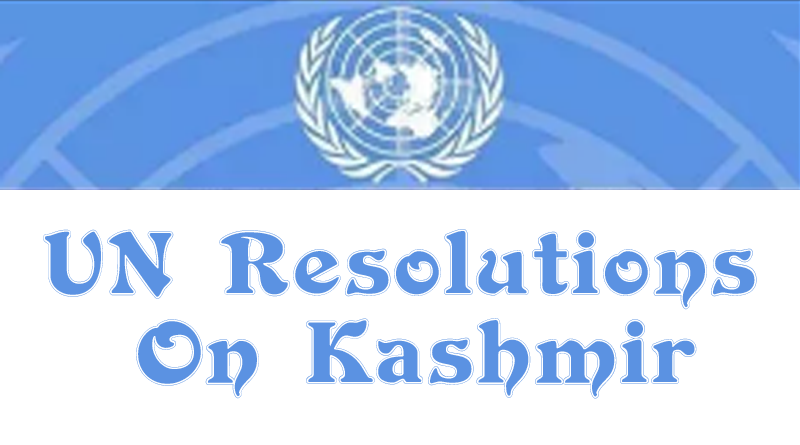Binding resolutions
IN a recent seminar in Islamabad on the Kashmir dispute, a senior official remarked that the United Nations Security Council (UNSC) resolutions on Kashmir were passed under Chapter VI of the UN Charter and not under Chapter VII, and are therefore not binding but only recommendatory. This view needs to be corrected.
The resolutions passed on Kashmir from 1947 to 1957 cannot be termed as recommendatory only. What we need to be clear about is that, in its initial years, the practice of the UNSC was not to mention the title of the chapter under which it was passing the resolution. During this time, it was the content and the substance of the resolution that would determine the nature of implementation. If one looks at the UNSC’s practice in its first decade of existence, only a handful of resolutions mention the title of the chapter, whereas the majority of resolutions that were acted upon by the member states did not mention any reference to a chapter of the UN Charter. The states’ practice seemed to be that the nature of recommendations and measures suggested or decided by the UNSC would be determinative of the chapter or chapters under which the resolution was passed.
The resolutions of UNSC passed in respect of the Kashmir dispute belong to this era of UNSC practice. Hence one finds that, in the 17 resolutions passed by the UNSC during 1947 to 1957 on the Kashmir dispute, none makes a specific reference to the chapter under which it was passed. With this background, to assume that all resolutions relating to the Kashmir dispute were passed under Chapter VI would be an incorrect conclusion to draw. After all, there is no reference to either Chapter VI or Chapter VII in any of the 17 resolutions.
The UN resolutions on Kashmir of 1947 to 1957 cannot be termed as merely recommendatory.
Most of the resolutions passed on the subject of the Kashmir dispute provide for very specific steps to be taken by both India and Pakistan. For example, UNSC Resolution 47 (adopted on April 21, 1948) spans over four pages. It refers to the earlier Resolution 39 (adopted on Jan 20, 1948) whereby the UN Commission for India and Pakistan (UNCIP) was established and authorised to investigate the dispute of the facts submitted for resolution to the UNSC.
The setting up of an independent body by the UNSC is a specific step that was acted upon, and it is not possible to imagine a resolution that establishes a standalone body be viewed as being only recommendatory in character. In Resolution 47, the mandate of UNCIP was extended and additional powers were conferred on it. A clear and elaborate programme was laid down for the activities of the commission. The resolution also addresses the governments of India and Pakistan, and directed progressive demilitarisation. It also called for the establishment of a provisional government. The resolution is very minute in its details and passed with a clear intention of leaving no specifics out. The nature, intendment and impeccability of the resolution lead ineluctably to the conclusion that it was meant to be implemented by both states.
It will be defying logic to assume that the UNSC resolution establishing UNCIP (which, further exercising delegated powers, passed a resolution on Nov 9, 1948, having three parts dealing with the ceasefire line) is merely recommendatory — when the same has been acted upon! This resolution led to the Cease-Fire Line Agreement (Karachi Agreement 1949). These later developments confirm that the resolutions were binding in nature and were operationalised in a manner that could only be imputed to binding resolutions.
Another way of confirming their mandatory nature is to view these resolutions as decisions of the UNSC. The relevant portions of the said resolutions were binding on India and Pakistan under Article 25 of the UN Charter which provides as follows, “The members of the United Nations agree to accept and carry out the decisions of the Security Council in accordance with the present Charter”. The ICJ in its Namibian Advisory Opinion also supported the position that a UNSC resolution would be binding where the language, discussion preceding the passage of the resolution, and the provisions of the UN Charter referred to in the resolution indicated that it was binding. Based on the ICJ’s opinion, to view resolutions on Kashmir as being merely recommendatory places an unnecessarily restrictive interpretation that is belied by the specific nature of measures which have been decided in these various resolutions on Kashmir.
It may be highlighted that the UNSC has now changed its practice and specifically mentions the chapter pursuant to which it is passing or adopting the resolution. For example, UNSC Resolution 1373 of 2001 relating to terrorism mentions Chapter VII just before the operative paragraphs. Likewise, Resolution 1267 of 1999 relating to Al Qaeda and the Taliban mentions in its preamble a similar reference. Further, Resolution 1540 of 2004 addressing the issue of non-proliferation makes it a point to state that it is acting under Chapter VII of the UN Charter. But this is a more recent trend, which was not the case in the practice of the UNSC while passing resolutions during the first few years after 1945.
Based on the above, the resolutions passed in the case of Kashmir have a binding character and cannot be referred to as exclusively recommendatory in nature. Pakistan should approach the UN with absolute confidence that it remains the responsibility of the UNSC to implement its binding resolutions. Whether Pakistan has the political clout to have the resolutions enforced remains another matter, but from a legal point of view Pakistan’s policymakers should be clear among themselves that the UNSC resolutions on the Kashmir dispute should not be de-emphasised on the grounds that they are simply recommendatory.
The writer is an ex-caretaker federal law minister, and president of the Research Society of International Law.
ahmersoofi@absco.pk
Courtesy: Published in Dawn, September 14th, 2019
https://www.dawn.com/news/1505094/binding-resolutions




